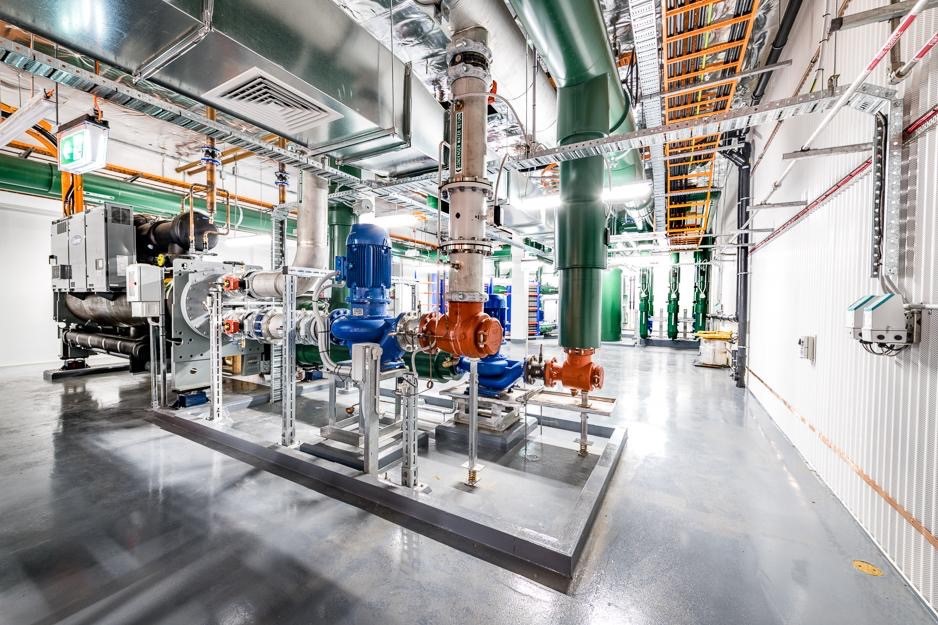When maximum temperatures exceed 25°C for eight months of the year, air conditioning becomes a major energy consumer. At UQ Gatton, a new central energy plant is keeping cooling systems chilled more efficiently across the campus.
The new plant optimises output from UQ Gatton’s solar farm, putting to work surplus power generated during the day to deliver low energy cooling when the sun goes down.
It works by creating a reserve of chilled water when abundant solar power is available, which is stored in a new three-million litre tank. When solar power isn’t available, the tank is discharged via energy-efficient pumps that disperse the chilled water to air conditioning systems around the campus. This takes place via a large underground ring main of pipes, which are also purpose-built.
Eight buildings at the Gatton campus have been hooked up to the new plant since it came online in February, enabling seven smaller, inefficient air-cooled chillers to be shut down. Energy cost savings are around $10,000 a month.
Consuming energy more strategically
It’s a clever system that achieves energy efficiencies on two main fronts:
-
It centralises chilled water production, which removes the need for individual buildings to each run their own inefficient chillers
- It ensures the chilling of water takes place when power is cheap. As the sun goes down, the chillers are turned off and the pumps are turned on.
Neil Brown, a senior building systems engineer at The University of Queensland, says the difference in energy usage required to operate the centralised chillers versus operating the pumps enables the campus to significantly reduce its load at peak times.
“If you look at the trend in kilowatt consumption, the difference is quite stark,” he says.
“The chillers that create our water reserve use around 300kW of power.
“That’s fine when the sun is shining. But the campus was constantly having to draw from the grid as soon as night fell or we had grey skies.
“Now, we activate the pumps to access the chilled water store every evening and these use around 20kW of power instead.”

Creating a more reliable community supply
Neil was involved in the project from the early stages of design, ensuring the three crucial systems involved—power control, building management and chiller control—all interfaced correctly.
A lot of research and forecasting went into getting the controls right and future-proofing the plant to ensure it would meet both near- and long-term needs for the university – and for the surrounding community, too. This involved converting the campus to a new 33kV power supply.
“That’s another really fantastic thing about the new plant,” says Neil.
“Prior to us implementing this solution, UQ Gatton was reaching the peak of its capacity of power available from the surrounding area. Bearing in mind the same grid supply services both the campus and the nearby community.
“There was no ability for the campus to grow, and both university and community were vulnerable to events that might cause temporary outages.
“By installing the new 33kV transformer, we were able to solve the limited supply problem to UQ Gatton, while releasing capacity in the 11kV feed for the wider community.”
Image credit: Photo by Nicole Geri on Unsplash



